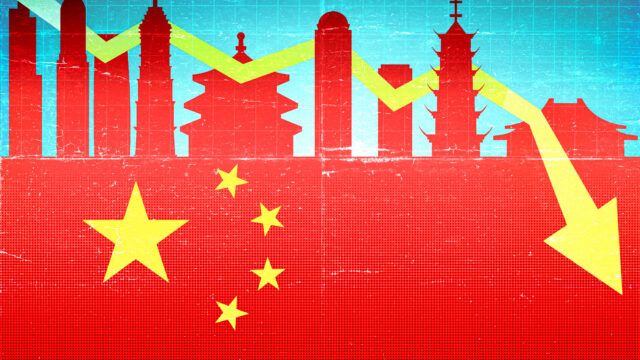Despite three years of decline, the historic property market downturn in the world’s second largest economy is still only at its halfway point.
This is according to a recent report published by the Amundi Investment Institute, which said it expects to see home prices drop more significantly in the large Chinese cities.
“The sharp correction in the housing sector is not over yet,” the report said, adding that it expects to see a 10% to 15% fall in home sales volumes in 2024 and 2025 before the momentum “stabilises” and the market enters a “gradual decline mode”.
The report cited “restrained easing” and “deteriorating supply/demand dynamics” as the primary reasons for a continued decline in real estate.
Although announcements made by the authorities to provide refinancing help to property developers may help further defaults in 2024, “it has little impact on reviving housing demand,” the report said.
Indeed, the measures were not able to prevent Hong Kong courts from ordering Evergrande, once China’s biggest property developer, to liquidate on Monday.
Although the default may signal to some investors that the worst may be over for the sector, the report suggested there is still some further pain to come for real estate prices due to the rising supply of housing slated for 2024.
“A controlled decline”
“In 2024, with a record number of listings in the secondary market and an expected increase in affordable public housing supply, we will start to see home prices drop more significantly, especially in large cities,” the report said.
“Beijing’s objective is to engineer a controlled decline for the real estate sector, not to revive the sector,” it added. “Hence, any easing of housing policy has been tactically restrained to support only rigid demand and implemented in a city-specific manner.”
Lower-tier cities in China are not benefitting from the latest easing measures and the latest relaxation of restrictions on purchases in tier-1 cities will only make the disparity between the two even wider, the report explained.
Additionally, it is becoming “an increasingly herculean task to counter the structural drop in demand using cyclical easing measures,” the report argued.
It pointed to urban household formation – a key driver of rigid demand – naturally decreasing and set to reach seven million units in 2026 before dropping to four to five million in 2023.
“The notion of a long- term demand floor appears to be misleading, as the market is set to shrink,” the report said.
It argued that despite avoiding significant price corrections so far, the real estate sector is “on the cusp of a downturn” and that the combination of shrinking incomes and falling property values will likely lead to an uptick in mortgage defaults.
But despite the bleak outlook, the report said the downturn is unlikely to become systemic as was the case during the 2008 Great Financial Crisis because China’s banking system has limited exposure to private developers.
“In addition, the Chinese financial system is administered with strong state intervention,” it added. “The loss could be digested over multiple years.”

















